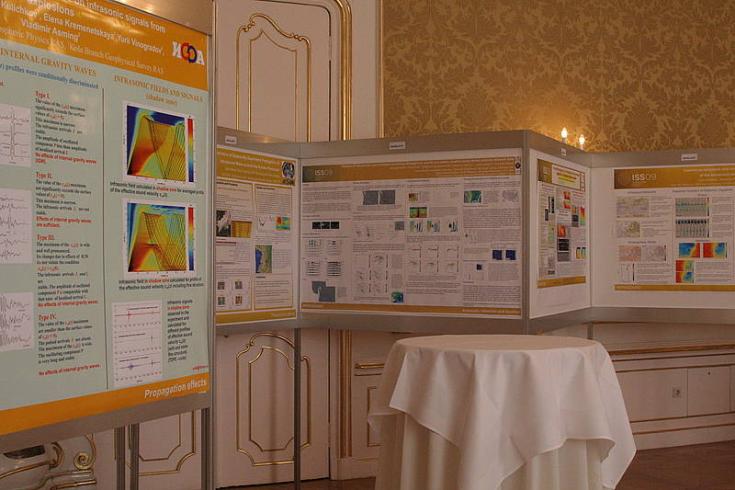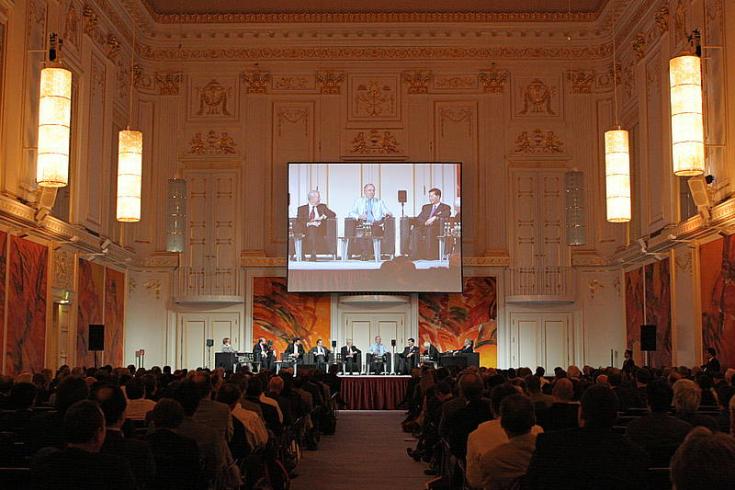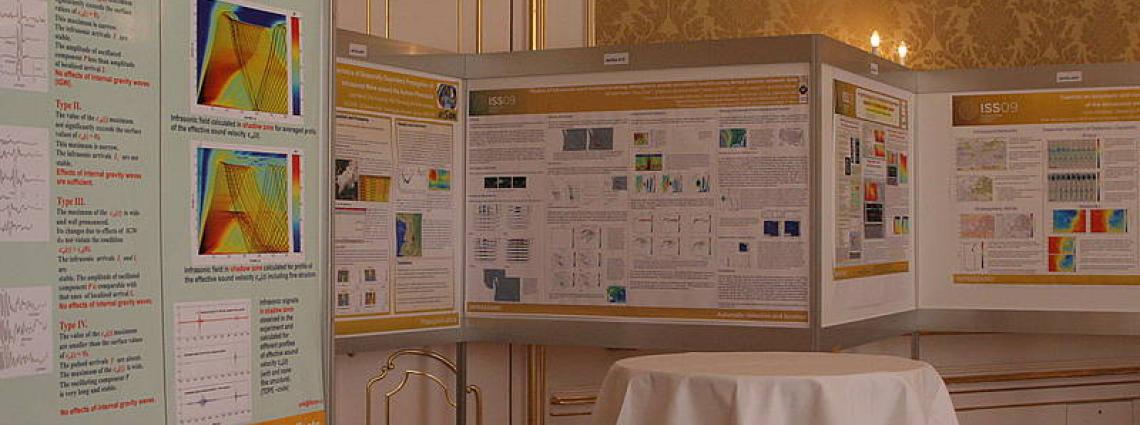CTBTO reviews the outcomes of ISS09, offering inspiration for the Science and Technology Conference 2011
More than 200 posters were displayed on a diversity of topics. These ranged from earthquake seismology to the study of sound waves in the oceans, from the sampling of airborne radioactive particles to the optimization of real-time data transmission by satellite, and from system performance monitoring to the modelling of large scale air movements in the atmosphere. External authors subsequently contributed articles to a publication entitled “Science for Security” (PDF), which brings together the range of contributions to ISS09 and highlights topics of particular relevance to the Treaty.

Some of the posters presented during the ISS09 Conference.
Setting priorities for verification-related research
- It is extremely difficult to detect and locate the numerous earthquakes and mining explosions that occur every day whilst simultaneously searching for evidence of a potential underground explosion. Analysts at the CTBTO’s International Data Centre (IDC) currently review automatically generated lists of events in an interactive way in order to find missed events and discard invalid ones. Modern machine-learning methods offer hope for a radical rethink of the way in which automatic events are located using data from the IMS network. One of the CTBTO’s aims is to capture the highly specialized expertise and accumulated experience of analysts and incorporate this into automatic processing.
- Knowledge about the way in which seismic waves travel through the Earth and sound waves travel through the oceans and atmosphere still requires some improvement, which will increase the accuracy with which events can be located.
- Radionuclide monitoring is central to the verification regime because the detection of radionuclides is the only direct way of establishing beyond doubt that an explosion was indeed nuclear. Further improvements in the instrumentation necessary for increasing the sensitivity and reliability of IMS radionuclide stations is another area of great importance to the CTBTO.
- The CTBTO also operates a network to detect radioactive noble gas. This is especially important for detecting underground nuclear explosions because a gas is more likely to escape into the atmosphere than solid particles. However, the circumstances in which gas can migrate to the Earth’s surface and into the atmosphere from an underground test is not well understood, and will attract further research interest. This applies not only to the interpretation of IMS data, but also to the conduct of an on-site inspection (OSI).
- The detection of a suspicious radionuclide by one or more IMS stations does not alone provide information about its origin. Precise calculations of the large-scale movement of air masses to determine the origin of the radionuclide are required through a process called Atmospheric Transport Modelling (ATM). Further ATM improvements will include a selective increase in the level of detail of the calculations performed.
- For the OSI regime to be operational after the Treaty’s entry into force, all procedures and methods developed for OSIs have to be applied on an experimental basis and equipment must be tested. The Treaty specifies a maximum area of 1,000 km² for an OSI, but this is a very large area over which to apply OSI technologies within a restricted time period. Among the issues therefore to be resolved is a need for a formal methodology for defining the OSI area of search, and for directing the focus of data acquisition as the OSI proceeds.
- The Global Communications Infrastructure (GCI) ensures data transmission from the facilities making up the IMS in near-real time via satellite to the IDC in Vienna. Data transmission is a rapidly changing field and a review of the communications concept would help meet current and anticipated changes in communications technology and costs. A review would also respond to the evolving needs of global data communication in support of Treaty verification.
- The CTBTO has already established a Virtual Data Exploitation Centre (vDEC), which will provide a platform for the development, testing and evaluation of new and improved methods for processing, analyzing and interpreting data. This initiative was reported in ISS09 and will continue to be enhanced.

On-site inspection panelists discuss findings during the ISS09 Conference.
Maintaining a close relationship with the scientific community
19 May 2010
